Like many urban cities, Toronto is experiencing a surge in growth, especially in the urban core where densification is a priority. A proliferation of high and mid-rise condos have been built to serve as the main source of entry-level home ownership. But, demand is high, which drives prices up and pushes people looking for an affordable home outside of the downtown areas. Typically, historic residential neighborhoods surround the urban core, such as one of Toronto’s most notable historic neighborhoods, Parkdale, known for its hundred-year-old Victorian and Bay & Gable mansions.
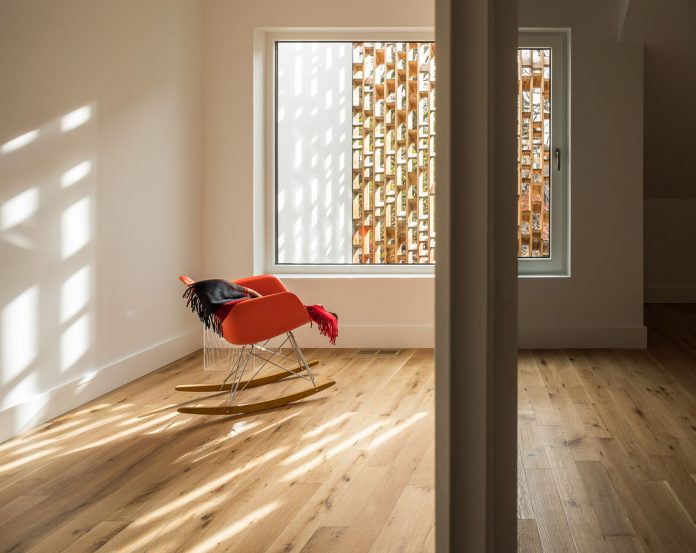
Many of the 19th Century mansions, often later converted to rooming houses, still exist and are being converted back into single family homes. The unique Parkdale neighborhood now finds itself home to a large burgeoning artist community. When Batay-Csorba Architects were brought in to design an infill project, the wanted to pay tribute to the existing context and the beauty of the craft and local artistry by making contextual relationships through massing and geometry along with texture and detail. The existing double wide site was divided into two separate properties with a four-story 3,500 square foot detached duplex residence being constructed on each site, allowing property owners to either rent out one of the units to subsidize their own income or to use it as a live-work space.
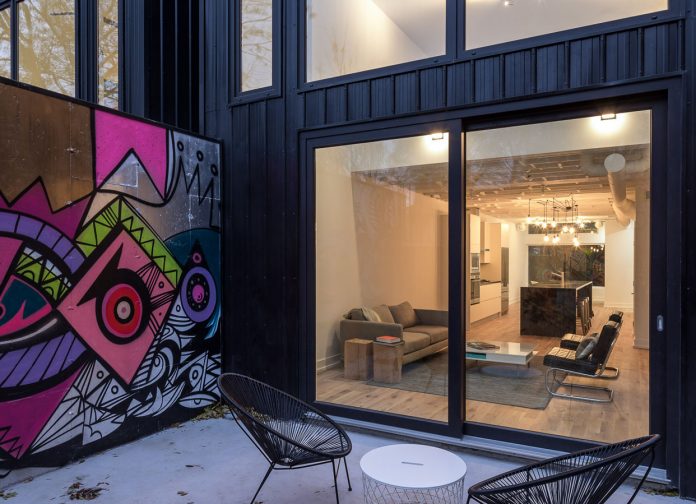
The Double Duplex emerges as a contemporary response to its context, using an abstraction of the pervasive Bay and Gable typology, the project becomes a reinterpretation of key architectural elements. These elements include the large bay massing that usually covered over half of the front elevation, the steep roofs and sharp vertical lines, the front balcony, high ceilings with large windows which allowed light to reach the depths of the narrow floor plates, and elaborately decorated ornamentation in the form of motifs, moldings and Brick Expressionism to create rich and textural facades.
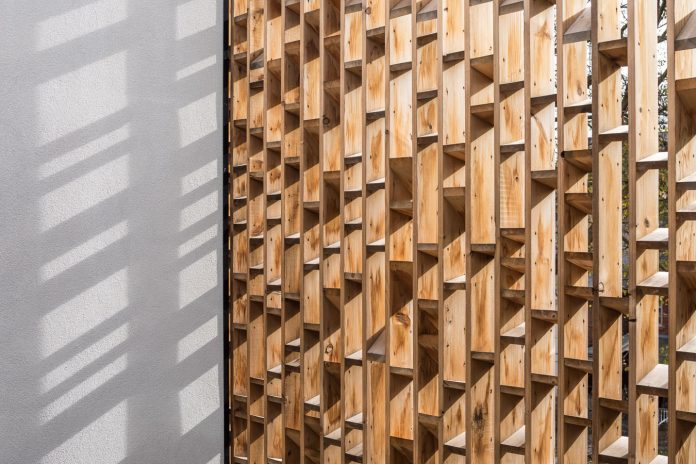
By utilizing digital fabrication techniques and use of new material technologies for perceptual, spatial and formal effect, the notion of 19th-century craft was translated by way of a two-story brise soleil. The brise soleil encloses the front and rear balconies, allowing for controlled lighting conditions and privacy. Constructed of a bio-enhanced, rot resistant and sustainable softwood, the individual pieces are organized to create a large scale dynamic facade. During the day, the light is filtered and illuminates the interior spaces with ephemeral dappled light effects. At night, the screen is reminiscent of a decorative glowing lantern.
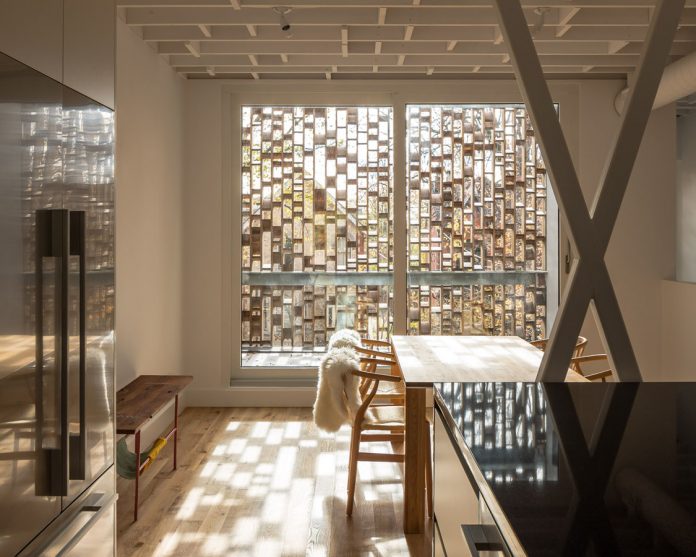
Each duplex residence consists of a two story lower unit and a two-story upper unit. The lower unit is carved out in the front and back with double height volumes that flow out to sunken courtyards maximizing the amount of natural daylight entering the unit and transgressing the basement apartment stereotype. The lower unit’s courtyards are wrapped in brightly painted murals by local artists. The upper unit is organized around a double height atrium space which brings natural light and ventilation into the center of the unit. Two exterior courtyards punctuate either end of the floor plate behind the wooden brise soleil, to the front a double height balcony overlooks the street and to the rear provides a master bedroom terrace.
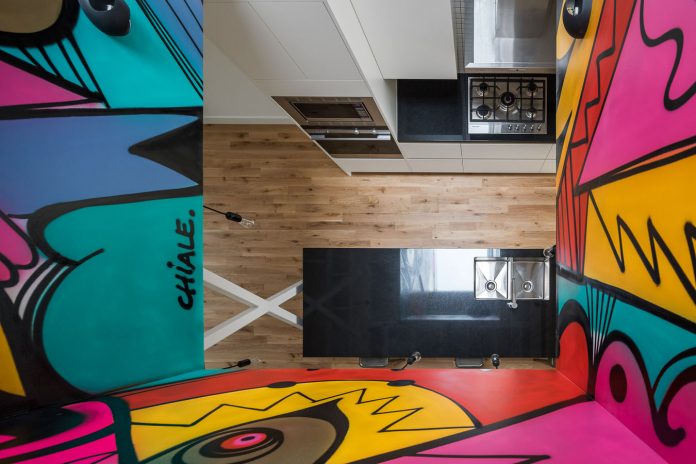
Creating an activated urban environment on the busy residential street was of key importance to the architects. A modern static building facade could not contend with the ornate historical context. The response was to engage the movement of the public passing by through the tools of material and spatial depth, like a large art installation. The two story brise soleil is angled so that as viewers pass by, multiple images appear, catching the light differently at different times of the day. The screen provides visual clues to a variation of figures that evokes loose, variable associations, giving viewers a free-association. The patterns across the surface and varied interrelationships of depth, angle, and shadow from one member to the next reinforce the abstractions they define in one moment and cloud it the next.
In another instance of perfect symmetry, the talented photography duo, Amanda Large & Younes Bounhar of doublespace photography bring their unique perspectives to document this project. Everywhere we look, we’re seeing double.
[photography by doublespace photography]









































